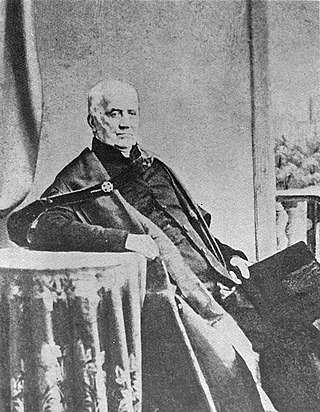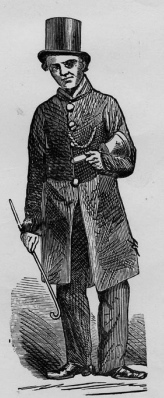Related Research Articles

The Farne Islands are a group of islands off the coast of Northumberland, England. The group has between 15 and 20 islands depending on the level of the tide. They form an archipelago, divided into the Inner and the Outer Group. The main islands in the Inner Group are Inner Farne, Knoxes Reef, the East and West Wideopens, and the Megstone; the main islands in the Outer Group are Staple Island, Brownsman, North and South Wamses, Big Harcar, and Longstone. The two groups are separated by Staple Sound. The highest point on Inner Farne is 19 metres (62 ft) above mean sea level and on Staple Island is 14 metres (46 ft).
Joseph Skipsey was a Northumbrian poet during the Victorian period and one of a number of literary coal miners to be known as 'The Pitman Poet'. Among his best known works is the ballad "The Hartley Calamity", which imagined the last hours of several of those trapped underground during the Hartley Colliery Disaster of January 1862. This devastating mining accident killed a total of 204 men and boys and remains England's most catastrophic pit disaster.

Charles Thorp, was an English churchman, rector of the parish of Ryton and, later, Archdeacon of Durham and the first warden of the University of Durham.
"When The Boat Comes In" is a traditional English folk song, listed as 2439 in the Roud Folk Song Index. The popular version originates in Northumbria. An early source for the lyrics, Joseph Robson's "Songs of the bards of the Tyne", published 1849, can be found on the FARNE archive. In FARNE's notes to the song, it is stated that the lyrics were written by William Watson in about 1826.

George "Geordie" Ridley (1835–1864) was a Tyneside concert hall songwriter and performer in the middle of the 19th century. His most famous song is "Blaydon Races". He was a contemporary of Edward Corvan. He has been described by a council source as a candidate for Tyneside's most famous songwriter.

Thomas Wilson was a Tyneside poet, from Low Fell in County Durham. His most famous work, written in the Geordie dialect, is The Pitman's Pay, originally published between 1826 and 1830.
Thomas Thompson (1773–1816) was a Tyneside poet, from Bishop Auckland area in County Durham. His last song was Jemmy Joneson's Whurry, first published in 1823, seven years after his death.
John Leonard was a Tyneside radical poet and songwriter of the early 19th century. His only dialect song was "Winlaton Hopping".
John Stobbs was a 19th-century English songwriter and poet who lived in the Tyneside district. Many of his writings are in the Geordie dialect.
Joshua L Bagnall was a Tyneside composer of the early and mid-19th century.
William Stephenson (senior) (1763–1836) was a watchmaker from Gateshead, schoolteacher, poet and songwriter, and father of William Stephenson (junior). His best known works are probably "The Quayside Shaver" and "The Skipper’s Wedding"
James Weams' Tyneside Song Book 1887 is a chapbook style songbook, giving the lyrics of local, now historical songs. It was published by John B. Barnes, Printer, 5, Groat Market, Newcastle in 1887.
James Weams was a Durham born comedian, and concert hall singer/songwriter and performer at the end of the 19th century and start of the 20th century. His most famous song is "Neighbors Belaw".
John Taylor (1840–1891) was an English songwriter and poet and an accomplished artist and engraver.
George Guthrie moved away from the town eastwards towards the coast, and worked as a blacksmith in Wallsend and Sunderland.
William Dunbar was a Gateshead songwriting collier who died at the age of 21.
J. W. Swanston was a Newcastle printer, and publisher of many Chapbooks. The premises were in St Andrews Street, off Gallowgate, and is now quite near St James' Park, the home of Newcastle United F.C., although this ground was not built until 1892, at the time of Swanston it was just a patch of sloping grazing land, near the Town Moor, and owned by the Freemen of the City.
The Tyneside Songster (or to give it its full title – "The Tyneside Songster containing a splendid collection of Local Songs by popular Authors, in the Northumbrian Dialect Printed by J W Swanston, 67 & 69 St Andrews Street, Newcastle and may be had at all Booksellers, Newsagents, &c" is a chapbook of Geordie folk song consisting of 39 songs, crammed into its meagre 16 pages, and published in the 1880s by J. W. Swanston, a Newcastle printer and publisher.
Chater's Annual was a book, published annually, between 1861 and 1882 by John W. Chater. It contained a mixture of songs, poems, humorous tales, jokes, conundrums, tongue twisters and other items of frivolity.
The Keelmin's Comic Annewal, for 1869 was a book, published and printed annually by John W. Chater, between 1869 and 1883. It contained a mixture of songs, poems, humorous tales, jokes, conundrums, tongue twisters and other items of frivolity.
References
- ↑ "Farne archives – A record run". Archived from the original on 25 April 2014. Retrieved 12 July 2012.
{{cite web}}: CS1 maint: unfit URL (link)